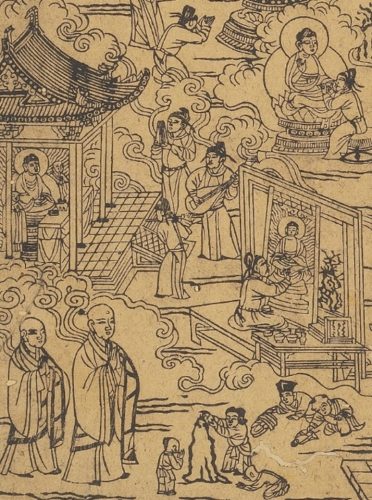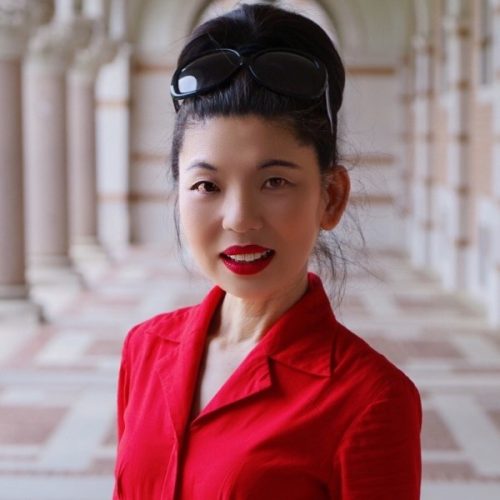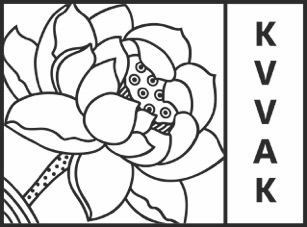
Lecture Dr. Shih-shan Susan Huang: The Dynamic Spread of Buddhist Print Culture in China and Beyond
At the invitation of the Hulsewé-Wazniewski Foundation at Leiden University, Susan Huang (PhD) will be in the Netherlands from 13 to 19 April. She is an associate professor in the Department of Transnational Asian Studies at Rice University in Houston.
On this afternoon, April 19 15:00 hrs, Prof Anne Gerritsen will give a short introduction, after which Susan Huang will deliver her lecture.
Following the lecture there will be an opportunity to ask questions.
The Lecture
This lecture explores the dynamic spread of Buddhist print culture in China and beyond, drawing on a wealth of printed books—many bearing illustrations—that were discovered in remote archaeological sites, retrieved from inside statues, or found in museum collections. This talk examines Buddhist woodcuts, not merely as static cultural relics, but holistically within multicultural contexts, and as objects on the move, transmitted across a sprawling web of transnational networks, “Buddhist Book Roads.” Prime examples include: the world’s earliest dated printed book, the Diamond Sutra (868), discovered in Dunhuang’s “library cave” in northwest China; artistic editions of the Lotus Sutra, produced during the Song (960-1279) and Yuan (1279-1368) in southern China, in the thriving printing center of Hangzhou, and later widely circulated throughout Japan, Korea, and Central Asia; the Dharani Sutra, which became extremely popular in fifteenth-century Beijing especially among female donors for its acclaimed protective and healing powers addressing childbirth complications. But the spread of Buddhist woodblock images extended well beyond Asia reaching European audiences by the seventeenth century where they were seen as prime visual examples of Chinese art, religion, and culture. This is evident in select Chinese-inspired prints originally illustrating a seventeenth-century Dutch travel book printed in Amsterdam, now in the Rijksmuseum’s collection. Though made using European copperplate etching, these Dutch prints simulate the linear quality of traditional Chinese woodcuts and downplay the use of chiaroscuro to minimize modeling of form and depiction of cast shadow. Their templates are based on Chinese Buddhist frontispieces adorning the Avatamsaka Sutra printed in Suzhou from the late-sixteenth through the seventeenth century.

Shih-shan Susan Huang (Ph.D., History of Art, Yale) is an Associate Professor at Rice University’s newly-founded Department of Transnational Asian Studies. Her current research focuses on the 10th-to-14th-century Daoist and Buddhist visual culture in China. Prior to joining the Rice faculty, she taught at the University of Washington, Seattle, and was a Mellon Post-Doctoral Fellow at Columbia University. Her dissertation The Triptych of Taoist Deities of Heaven, Earth, and Water and the Making of Visual Culture in the Southern Song China (1127-1279) has been awarded the Blanshard Prize at Yale University. Her articles appeared in peer-reviewed journals as Artibus Asiae, Ars Orientalis, Journal of Daoist Studies, Palace Museum Research Quarterly, the Zhejiang University Journal of Art and Archaeology, and others.
Her book, Picturing the True Form: Daoist Visual Culture in Traditional China (Harvard Asian Center, 2012), translated into Chinese by Dr. Zhu Yiwen, was published by Zhejiang University Press in 2022. She co-edited Visual and Material Cultures of the Middle Period China with Patricia Ebrey (Brill, 2017). Her recent articles explore Song-to-Ming book art of the Lotus Sutra and Diamond Sutra, Buddhist printing under Tangut Xi Xia rule, and painting and printing connections.
Huang’s new monograph, The Dynamic Spread of Buddhist Print Culture: Mapping Buddhist Book Roads in China and its Neighbors, forthcoming in the Brill series Crossroads – History of Interaction across the Silk Routes, examines printed images and texts as objects “on the move”, as they were transmitted along networks and book roads in a transnational context. For more information, visit https://shihshansusanhuang.com
